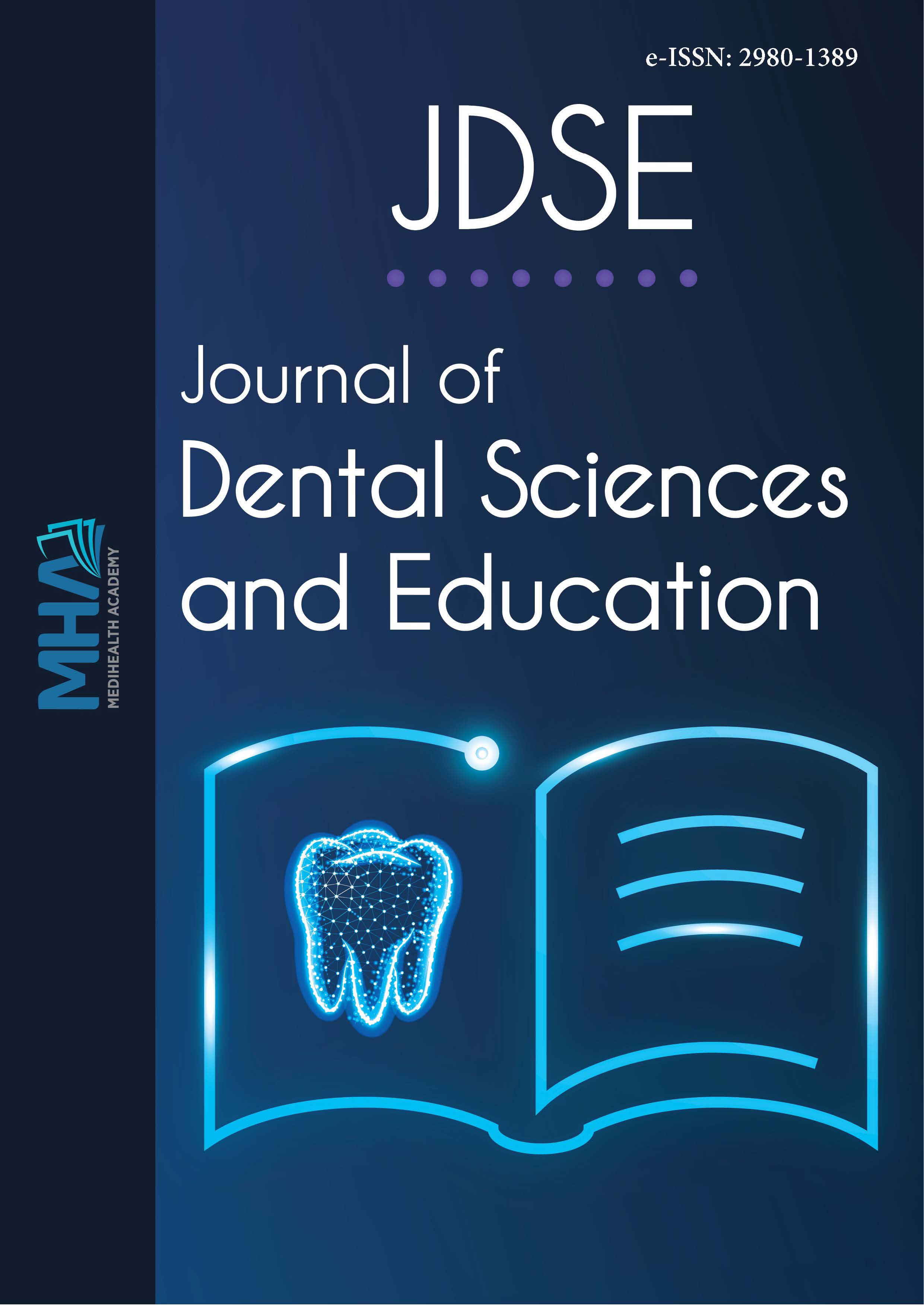1. Anderson LW, Krathwhol DR. A taxonomy for learning, teaching, and assessing: a review of bloom’s taxonomy of educational objectives. <em>Longman.</em> 2001.
2. Fayaz A, Mazahery A, Hosseinzadeh M, Yazdanpanah S. Video-based learning versus traditional method for preclinical course of complete denture fabrication. <em>J Dent (Shiraz).</em> 2015;16(1 Suppl):21-28.
3. Rystedt H, Reit C, Johansson E, Lindwall O. Seeing through the dentist’s eyes: video-based clinical demonstrations in preclinical dental training. <em>J Dent Educ.</em> 2013;77(12):1629-1638.
4. Liu X, Liu M, Yang Y, Fan C, Tan J. Step-by-step teaching method improves the learner achievement in dental skill training. <em>Eur J Dent Educ.</em> 2019;23(3):344-348.
5. Wu Q, Wang X, Jin D, et al. Validation of digital evaluation in systematic training on tooth preparation in aesthetic veneer rehabilitation.<em> Chin J Dent Res.</em> 2021;24(1):55-60.
6. Perry S, Bridges SM, Burrow MF. A review of the use of simulation in dental education. <em>Simul Healthc.</em> 2015;10(1):31-37.
7. Marshall TA, McKernan SC, Straub-Morarend CL, et al. Evidence-based dentistry skill acquisition by second-year dental students. <em>Eur J Dent Educ.</em> 2018;22(3):e612-e618.
8. Satterthwaite JD, Grey NJ. Peer-group assessment of pre-clinical operative skills in restorative dentistry and comparison with experienced assessors. <em>Eur J Dent Educ.</em> 2008;12(2):99-102.
9. Zou H, Jin S, Sun J, Dai Y. A cavity preparation evaluation system in the skill assessment of dental students. <em>J Dent Educ.</em> 2016;80(8):930-937.
10. Tahani B, Rashno A, Haghighi H, Monirifard R, Khomami H, Kafieh R. Automatic evaluation of crown preparation using image processing techniques: a substitute to faculty scoring in dental education. <em>J Med Signals Sens.</em> 2020;10(4):239-248.
11. Schepke U, van Wulfften Palthe ME, Meisberger EW, Kerdijk W, Cune MS, Blok B. Digital assessment of a retentive full crown preparation-an evaluation of prepCheck in an undergraduate pre-clinical teaching environment. <em>Eur J Dent Educ.</em> 2020;24(3):407-424.
12. Chiang H, Staffen A, Abdulmajeed A, Janus C, Bencharit S. Effectiveness of CAD/CAM technology: a self-assessment tool for preclinical waxing exercise. <em>Eur J Dent Educ.</em> 2021;25(1):50-55.
13. Kwon JW, Son SM, Lee NK. Changes of kinematic parameters of lower extremities with gait speed: 3D motion analysis study. <em>J Phys Ther Sci.</em> 2015;27(2):477-479.
14. Sato K, Usui Y, Yanagida E, Watabe S. Evaluating the use of motion capture in practicing local folk dance.<em> Int Conf Culture Computing.</em> 2017:143-144.
15. Choi W, Isaka T, Sekiguchi H, Hachimura K. Quantitative analysis of leg movement and EMG signal in expert Japanese traditional dancer. <em>Adv Hum Robot Interact.</em> 2009:165-179.
16. Green JR, Wilson EM. Spontaneous facial motility in infancy: a 3D kinematic analysis. <em>Dev Psychobiol.</em> 2006;48(1):16-28.
17. Ohlendorf D, Erbe C, Nowak J, et al. Constrained posture in dentisty-a kinematic analysis of dentists. <em>BMC Musculoskelet Disord.</em> 2017;18(1):291.
18. Hauser AM, Bowen DM. Primer on preclinical instruction and evaluation. <em>J Dent Educ.</em> 2009;73(3):390-398.
19. Abe S, Noguchi N, Matsuka Y, et al. Educational effects using a robot patient simulation system for development of clinical attitude. <em>Eur J Dent Educ.</em> 2018;22(3):e327-e336.
20. Rhienmora P, Haddawy P, Suebnukarn S, Dailey MN. Intelligent dental training simulator with objective skill assessment and feedback. <em>Artifi Intell Med.</em> 2011;52(2):115-121.
21. Li Y, Ye H, Wu S, et al. Mixed reality and haptic-based dental simulator for tooth preparation: research, development, and preliminary evaluation. <em>JMIR Serious Games.</em> 2022;10(1):e30653.
22. Pang M, Zhao X, Lu D, et al. Preliminary user evaluation of a new dental technology virtual simulation system: development and validation study. <em>JMIR Serious Games.</em> 2022;10(3):e36079.
23. Yu W, Zhu Z, Su T, Weng W, Xu C. A pilot study on the use of a novel digital real-time evaluation system in undergraduate preclinical training of tooth preparation in fixed prosthodontics. <em>Eur J Dent Educ.</em> 2023;27(4):949-955.
24. Su Yin M, Haddawy P, Suebnukarn S, et al. Formative feedback generation in a VR-based dental surgical skill training simulator. <em>J Biomed Inform. </em>2021;114:103659.

